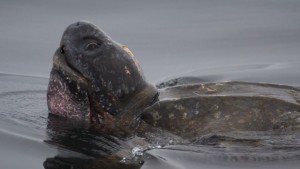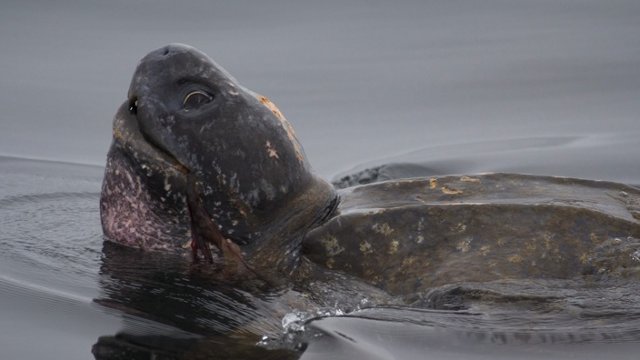
It was another incredible weekend visually foraging for wildlife out on the Gulf of the Farallones National Marine Sanctuary.
Since the season is in transition between the productive upwelling season and the storms of winter, the weather is fine and the wildlife a reflection of the mixture of the seasons. This weekend we were fortunate to see a minke whale, a species not often seen in these waters. The shy black whale swam north along the Pt. Bonita Channel not far from the Marin Headlands as we steamed north towards Bolinas. At a maximum length of 35 feet, the Northern minke whale (Balaenoptera acutorostrata) are the second smallest baleen whale, and the smallest in the Northern Hemisphere. Minke whales are widely distributed throughout the world, commonly found from the poles to the tropics, but they prefer the open sea.
Minke whales have been exploited by whalers since at least the 1930s, but were previously overlooked by hunters due to their relatively small size. Since these whales have been targeted by commercial whalers, several thousand have been hunted in the Northern Hemisphere and at least 100,000 have been killed in the Southern Hemisphere. In the past, these whales have been commercially hunted by China, Iceland, Korea, Russia and Taiwan. Today, they are still taken by whaling countries such as Greenland, Japan and Norway as a source of food and for ‘scientific research.”
The California/Oregon/Washington population is estimated to be 500-1,000 animals, so we were fortunate to watch the whale as she shallow dived in the characteristic “head up, roll and dive” without showing the fluke’s pattern.
The ocean had barely a mild bump and little wind and the sun glittered on the surface as the Outer Limits headed west on the journey to the islands. En route we spotted a number of unusual seabirds with the help of two biologists who were hitching a ride as part of the Farallones Patrol. This voluntary program incorporates private yachts and fishing boats like the Outer limits to transport people and supplies to aid the Point Reyes Bird Observatory who work on the island. Abe is a graduate student, while Matthew is a post-doctoral researcher at UC Santa Cruz. They’re recording the calls of storm petrels on the island and with the help of computer algorithms are able to distinguish individuals among all the cacophony of nesting seabirds.
